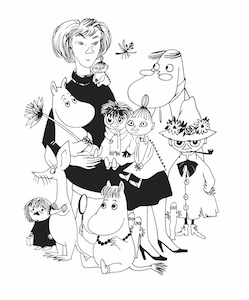
*
But let’s consider Uncle Einar’s story more carefully. From Tove’s Swedish maternal line, Einar Hammarsten was imaginative, yes, but he also lived through the mid-1800s, one of the most significant eras for Scandinavian folklore preservation, ignited by the Grimm Brothers’ work in nearby Germany. The year 1849 saw Gunnar Olof Hyltén-Cavallius and George Stephens publish “Sweden’s first important published collection of folktales,” Svenska Folk-Sagor och Äfventyr (Swedish Folk and Fairy Tales), and by 1873, Stockholm established the first Nordic Museum, systematizing the study of Nordic folklore. Then, in the wake of the Finnish Civil War (1918)—in which Tove’s father had fought to secure Finland’s independence from Russia—the solidified nationalist sentiment inspired scholars and everyday Finns, as well as neighboring Swedes, to pass on their traditional Nordic culture. Recounting folktales, legends, and ghost stories was commonplace, and Tove’s diaries prove her mother’s brothers were no exception. Claiming her own love of telling “stories of ghosts and trolls” as “a family failing I can’t help,” Tove proudly recounts Uncle Einar and Uncle Torsten’s prowess at their annual family storytelling competitions. Uncle Einar may have invented the idea of Moomintrolls that expose food-snatching culprits in the act, but he could have just as easily been describing Swedish tomtar, those miniature, elderly house spirits with red caps who hid in dark corners and acted as a “folk conscience.”
Whatever the case, the story haunted young Tove. In her 1931 diary, at the age of sixteen, she confesses, “I lie on my bed emptying an endless succession of bottles of mineral water and babbling about Moomintrolls with Sun-Maid eyes.” The next year, she describes herself as “prey to colds, angry hosts and Moomintrolls.” The Moomintrolls are terrifying creatures when they first inhabit her, and she sketches them as sheet-over-the-head style “house ghosts” that, within a few years, evolve into deep black watercolors with sharp, claw-like features. Trolls, remember, were widely known to live in mountains and kidnap unsuspecting humans. They were to blame for much Nordic strife. It is no surprise, then, that the Moomintrolls reemerge nearly a decade later when Tove is writing her way through the gloom of another world war. But curiously, amid the bombs and uncertain future, Tove’s troll transforms from a shadowy creature with a long, snapping snout to a soft, round-bellied mammal prone to long winter naps.
*
To assert that Tove Jansson’s invention of the Moomin world may be partially rooted in ancient lore is, for this writer, to fear performing an act of sacrilege: that is, to risk claiming that the rare female artist who achieved renown in modernist Europe is not a true genius. It is to fear outing her as inauthentic. But such fear begs consideration. First popularized during the Renaissance, the concept of genius came to embody ideas—such as individuality, intellectual superiority, total freedom, and a singular ability to generate ideas—that, at least in Eurocentric cultures, have justified colonialist and sexist appropriation in artists from Picasso to Fitzgerald. Our contemporary understanding of genius continues to insist on these problematic notions: the eccentric artist, the brilliant loner. I, however, see Tove Jansson’s rootedness in Nordic lore, family, and connection as deepening her work. To fully consider her art, we must consider it on its own terms by questioning the popular ideological lens. The ideal of genius is limited, especially when applied here.
Tove’s work, not just her biography, is ripe with human connection. She created a magical Moomin family that adventures together. Even when the family falls silent in the somber ninth and final book of the series, Moominvalley in November, published after her mother’s death, they crowd together in Moominpappa’s tower. Throughout her own life, Tove maintained loyal bonds, summering with her family on their beloved ancestral island, Klovharum, and maintaining a decades-long relationship with Tuulikki Pietilä, the love of her life and inspiration for the Moomin series character Too-ticky. Tove even sustained her love of humankind in the face of war, offering readers the jolly Moomintrolls that had helped her through it. Connection was an integral theme in her later novels, too, whether they explored the intergenerational bonding of grandmother and granddaughter as in The Summer Book, or the complicated bond between author and reader, as in The True Deceiver.
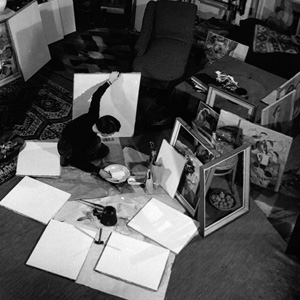
Born to a family of working artists, Tove was encouraged to develop her artistic identity while witnessing up close the forces that kept her mother, Signe Hammarsten, from practicing her own fine art sculpture. She watched her mother trapped behind a desk in their apartment drafting for pay, while her father, Viktor Jansson, earned national acclaim as The Sculptor. In a letter to her friend Eva Konikoff in 1941 when she was just 27, Tove observed:
All the reasons I don’t want to get married came up. One man after another, and Pappa, Faffan, came first. The whole male solidarity and protective pedestal of privileges, their weaknesses, inviolable and fenced in by slogans, their inconsistency and charming disregard for the feeling of others proclaimed with no trace of nuance as they beat a big drum from morning to evening from the safety of their boys’ network and connections. I can’t afford it, I haven’t time to marry any of them! I’m no good at admiring and comforting. Of course I’m sorry for them and of course I like them, but I’ve no intention of devoting my whole life to a performance I’ve seen through. I see how Faffan [father], the most helpless and instinctive of men, tyrannises over us all, how Ham [mother] is unhappy because she has always said yes, smoothed over problems, given in and sacrificed her life, receiving nothing in return except children war can kill or destroy with negativity. A men’s war!
Tove consciously avoided the conventions of her time and cut her own course through the world of fine art.
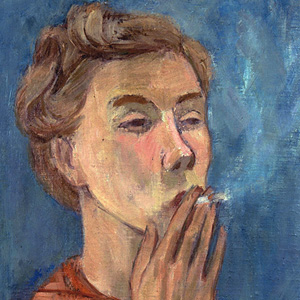
After completing her studies at the Stockholm Technical School, Tove became one of only two female students at the Finnish Society of Art in Helsinki, and then the only female student, until she finally left in 1937. The following spring found her on a scholarship in Paris, eventually landing in the coveted École des Beaux-Arts. But, finding the instruction too rigid, the instructors too classical, and their relationship to color stifling, she dropped out, took independent instruction at Adrien Holy’s atelier, and dedicated all her time to painting. She returned to Helsinki, rented herself a flat, and joined the organizations that promoted artists, such as the illustrators’ association and the Artists’ Guild. To make rent, she illustrated covers for Garm, a satirical Swedish-language political paper for which Tove’s mother had also illustrated. It was on these covers that the first Moomin-as-we-know-him appeared under the name of “snork.”
Tove drew for Garm throughout the Finnish Continuation War (1941–1944), and her resistance to a conventional life swelled. As she explained to her friend Eva:
I can see what would happen to my work if I married. It’s no use; I have all these feminine instincts to comfort, admire, submit, sacrifice myself. I would either be a bad painter or a bad wife. And I refuse to give birth to children who can be killed in some future war . . . Can we not be together without making demands on each other’s work, life and ideas, continue to be free beings without either one having to give way?
Tove had been marked by her parents’ lives and her mother’s artistic frustrations, by war, and by the expectations and limitations for women in her society and in her beloved art world. By refusing to enter a conventional marriage and instead opting to continue her education and devote herself to making work, she demanded enough freedom from these constraints as was necessary to become a strong artist, without denying her own humanity.
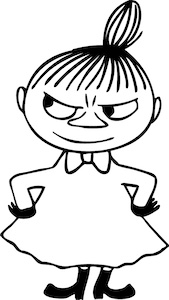
She never did have children, but she did earn a name as one who writes for them. She became known to fans and in the local and international press as The Grandmother of Finnish Comics, Mother of all Moomins, and Children’s Book Author. Even after the Moomins made her a celebrity upon the release of The Hobgoblin’s Hat (Finn Family Moomintroll) in 1948, then an international superstar in the 1950s thanks to the English translations of her Moomin comics, Tove continued painting. She pushed herself as an artist, not content to rest in her fame or allow her work to stagnate. She experimented on canvas, stayed playful in her notebooks, began writing novels, then memoirs, then short stories. And finally, she ended the Moomin series when she sensed it was time. Despite the protestations of devoted fans, many of whom were angered by the unambiguous conclusions in Moominvalley in November, Tove listened to her work. She simply followed her pen’s ink, never forcing a pattern.
Tove Jansson had wished to be known primarily as, what she called, a fine art painter and writer of adult fiction. Before her Moomin fame, she had already been exhibiting, writing, and trading works on canvas for heating fuel. It was with this desire to remain true to her art that she treated her Moomin stories and comic strips as nuanced works of literature, not as the moralistic parables common to writing aimed at the young. Inside the seemingly conventional nuclear family of the Moomins, Jansson elevated the childlike spirit of play—what some might call foolishness— through biting wit and subversion. And yet, there is a compassion that is palpable. When the Moomins interact with characters like the housewifery magazine-reading Mrs. Fillijonk and the nervous maid she recommends, we see social conventions thrown into sharp contrast, their ridiculousness exposed. We are forced to ask ourselves: What is wrong with the way the Moomin family makes a game of cleaning day? What, really, is wrong with washing your dishes in the rain or building your home around a tree rather than cutting it down? What is a house, anyway? And by asking ourselves such questions, posed in the lighthearted manner the Moomins embody, we are led to question other aspects of our lives as social constructs. In Moomin Valley, Tove Jansson makes living much lighter than it is. She turns child magic into the most subversive personality of narrative.
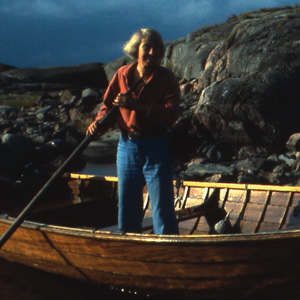
*
This revisioning of the Moomins who transformed from sharp-featured, frightening phantoms into softly rounded domestic creatures, then, is no accident. In the shadows of war, from which the Moomin stories grew, Tove, as biographer Boel Westin tells us, “believed the dreary years of war had reduced the value of humanity. She had no sense of war as a natural part of history.” In the spring of 1944, Tove herself wrote:
One day people will say that we lived in interesting times, in a great period. But I think the great events around us have only diminished us. People cannot manage to be magnificent in a long-lasting war. They become more and more diminished and see less and less, clinging to the phraseology of nationalism, to slogans, ancient prejudices and principles, to themselves. Or they creep into something and hide.
“Freedom is the best thing”—the first line of Tomas Bishop’s song of freedom—were the words Tove inscribed on the family outhouse next to her original Moomintroll drawing. Freedom from conventional wisdom, from human plunder, from war and the dangerous language it breeds are at the heart of the Moomin family. The Moomins offer us all—big and little humans alike—an alternative to the real foolishness of this world. And it is time now, again, for the Moomins to remind us how to question.

© Moomin Characters
